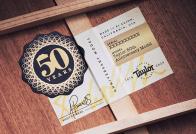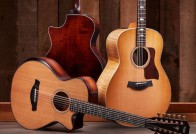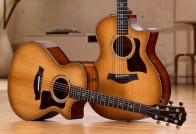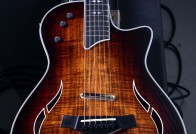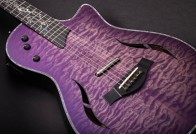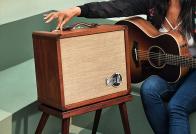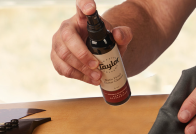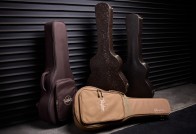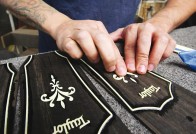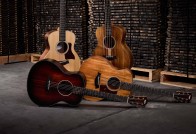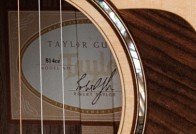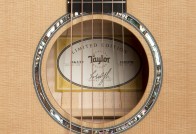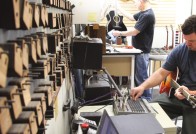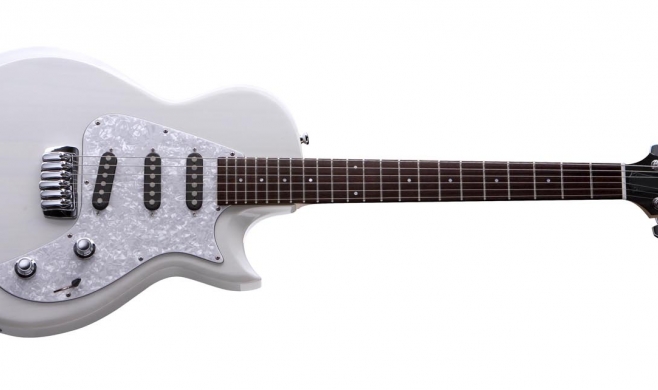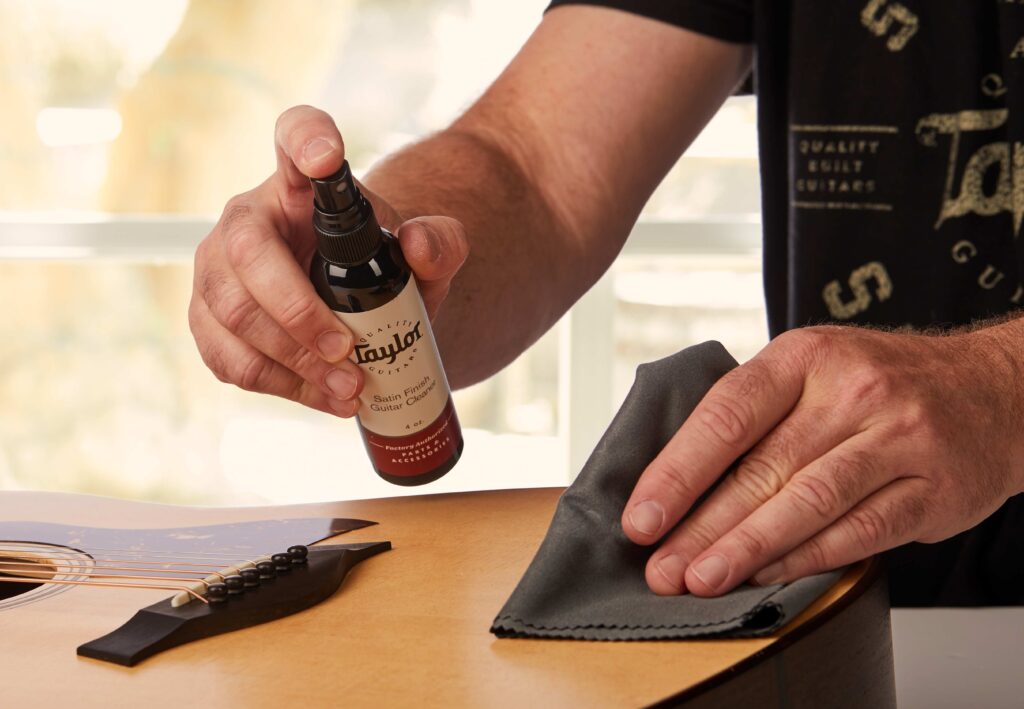Vintage Guitar writer Bob Dragich gives Taylor’s SolidBody Series all the attention he obviously feels it deserves in an in-depth review, published in the magazine’s July 2008 issue. The article, aptly titled “Worth the Wait,” starts at the very beginning of the SolidBody story.
“For years, Bob Taylor fended off the question, ‘When are you going to build a solidbody guitar?’ Well-known as a builder of top-notch acoustics, for his company, Taylor Guitars, the step seemed logical and maybe even a little overdue. And when Taylor introduced the semi-acoustic T5 three years ago, it was treated by many as a tantalizing hint. But again, ‘When?’
‘When we have something to offer…’ was Bob’s oft-repeated reply.
“Then, as part of the general process of exploration and experimentation that goes on at the company,” writes Dragich, “longtime employee David Hosler devised a new pickup. Instead of dropping it in yet another Strat or Les Paul clone, Hosler and Bob Taylor agreed the new pickup demanded a new guitar.
“What they came up with is the SolidBody series with variations dubbed Classic, Custom, and Standard. All are flat-front/single cutaway guitars with two pickups, a standard Taylor C-shaped neck (the same used on their acoustics), a 24 7/8” scale, and a nut that measures 1 11/16” wide.”
Dragich then describes the various tonewoods, aesthetic decisions, construction details, exclusive hardware and electronics that go into each SolidBody model, taking the necessary time to linger over specific details that intrigue him most.
“The basic shape of the Taylor solidbodies is captivating, and they are also extremely comfortable to hold and play. The neck has a “three bears” quality — it’s not too thick, not too thin…this one is just right. The fret ends are perfect and the action suspiciously low for a neck with almost no relief. The bevels on both sides of the cutaway encourage exploration of tones in the upper register, and the contour at the top of the back will come as a relief during long practice and recording sessions while seated.”
He gives the all-aluminum SolidBody bridge and T-Lock neck joint high marks for design ingenuity and playability: “The bridge common to all three [models] is cast aluminum with an art deco appearance designed to remain free of sharp edges. Individual bridge saddles are adjustable and can be locked down through a plate in the back of the guitar. That means the strings can be replaces without having the saddles move at all.
“The neck is attached with Taylor’s proprietary T-Lock system, where an Allen bolt goes through the body and pulls the neck into a pocket shaped like a W…The T-lock neck system is so tight that, viewed from any angle but the back, the neck appears to be glued on the body.”
Dragich works methodically through each position of the five-way switch on each model in turn, describing the sounds he gets in terms any electric player can relate to. For example, here is his SolidBody Classic tour du tone:
“Sonically, the five-way blade switch in position one on the Classic (the least expensive of the group) offers a warm, jazzy tone with just a little more treble edge than a traditional humbucker. Dialing up a mild overdrive from a tube amp, the neck pickup gives off a deep, throaty growl with a hint of that magic steel-on-glass tone of a great Stratocaster-type pickup. In position two, the Classic solves that age-old problem of adjusting for too much low-end when you go from lead to rhythm. Its open, airy sound is still distinctly electric, but won’t muddy up the mix.”
Moving to the third position: “The central position adds midrange and lower-mids, offering a deeper, more forceful rhythm sound that is still unobtrusive. … position five (both coils in the bridge pickup) dishes out a tone very reminiscent of a Telecaster, though not quite as bright or with the same edge.
“Backing up a notch to position four takes the tone of the bridge-only spot on the blade and boosts it with lower-mids and adds just a hint of cluck; in other words, a great lead tone,” Dragich notes.
In addition to the SolidBody review, this issue of Vintage Guitar also includes a sidebar interview with Bob Taylor, David Hosler, and Brian Swerdfeger, in which the team elaborates on the development of Taylor’s first-ever solidbody electric guitar. Other subjects touched upon in the three-way interview include the challenges of getting the sound you want as an electric player and the de-mystification of Taylor’s all-important culture of innovation and exploration as it pertains to guitar design.



